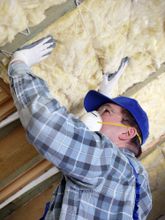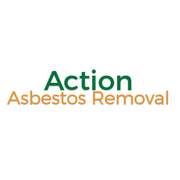
If you’re renovating your home and it was built before the 1980s, there is likely asbestos lingering in some building materials. Understanding this hazardous material is an important part of protecting yourself and your family. If you’re unsure what these fibers are and why they’re dangerous, the answers to some frequently asked questions below can inform you about where they’re found and how asbestos removal professionals can help.
Common Asbestos Questions Answered
What is asbestos?
Asbestos is a naturally occurring group of six different minerals: crocidolite, chrysotile, amosite, tremolite, actinolite, and anthophyllite. These minerals bond together into fibers so small that the human eye can’t detect them. When combined, these fibers create a fluffy consistency. Asbestos is soft, flexible, and resistant to heat, corrosion, and electricity, which is why it was a popular material used in roof shingles, siding, insulation, heat-resistant fabrics, and car brakes.
What makes it harmful?
Because these fibers are so small and light, it’s easy for them to become airborne. Inhaling them can lead to mesothelioma, COPD, and lung cancer. Asbestos is not harmful if left undisturbed, but the slightest vibrations can shake the fibers loose. For example, if a home has vermiculite insulation, every time the pipes rattle or the HVAC turns on, pieces of asbestos fibers may become airborne. If the insulation is in the basement, then it’s possible for fibers to enter the HVAC system and blow into the home. The longer the exposure, the higher the health risk. If there are damaged or frayed materials in the home, contact a properly trained asbestos professional immediately.
How is it removed?
 Asbestos removal is best left to the professionals. Technicians dressed in full protective gear start by sealing off the HVAC units to prevent fibers from distributing throughout the home. The area is then sealed off, and professionals use HEPA filter vacuums to clean the fibers. Once they’re removed, they’re placed in airtight containers.
Asbestos removal is best left to the professionals. Technicians dressed in full protective gear start by sealing off the HVAC units to prevent fibers from distributing throughout the home. The area is then sealed off, and professionals use HEPA filter vacuums to clean the fibers. Once they’re removed, they’re placed in airtight containers.
Is it still used today?
Asbestos was commonly used in the 1970s, but faced a partial ban in 1989, prohibiting several products from entering the marketplace. All mining of asbestos stopped in the United States in 2002. Finally, in April of 2019, the EPA created a final rule stating that no more asbestos may be produced or imported without an inspection and proper notices warning the public of its inclusion in products.
However, asbestos still resides in roofing products, vinyl flooring, and insulation products within older homes. Imported automobile clutches and brakes, cement piping, and corrugated sheeting may still be present in materials, so it’s crucial to conduct testing before renovating.
If you suspect there is asbestos in your home, turn to the experts at Action Asbestos Removal in Montville, CT. They’ve been helping homeowners eliminate asbestos since 1992. Whether you’re planning a renovation or have recently discovered the material’s presence, these experienced asbestos removal professionals are available 24 hours a day to make sure your family is safe. Call (860) 848-2912 or visit their website to learn more about their services.
About the Business
(1 reviews)
Have a question? Ask the experts!
Send your question

